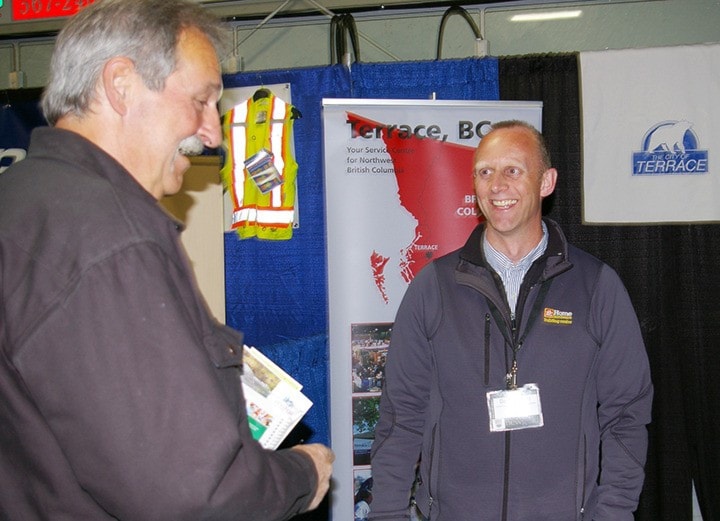By Todd Hamilton
Despite a drop of about 30 per cent in exploration in 2013 and the temporary shutdown of a number of coal mines, the message delivered at the 2014 Minerals North Conference in Vanderhoof this week was one of optimism.
In what amounted to a state of the industry address to delegates at the conference, provincial mines and energy minister Bill Bennett said the start-up of three new mines and the anticipated June power-up of BC Hydro's Northwest Transmission Line along with the commencement of operations at the $500 million Red Chris Mine north of Terrace proves mining in northwest B.C. is on the rise, not decline.
Although $474 million was spent in exploration in the province in 2013 and of that $201 million in the northwest, which was down approximately 30 per cent from 2012, the number, delegates and presenters at the conference said, is misleading.
More than $600 million had been spent in 2012 and the 2013 numbers, while down, were still a record.
“We’ve been doing really well in B.C. Both 2012 and 2013 were records for B.C., we need to sustain that ... we need not to rest on our laurels ... we need to figure out ways to make sure that trajectory continues to go up and that we continue to see more exploration investment in B.C. every year,” Bennett said. “In 2001 ... it was about $30 million.”
Bennett said lower commodity prices were to blame for the drop from 2012’s record levels. Regardless, despite the halt to some coal production due to low prices, the numbers were encouraging.
“I know the [mining] industry is going through one of the typical tough times or difficult times ... because of commodity prices right now,” he said.
“Surprisingly, the number of jobs in the industry were actually up three per cent over last year because of the new mines ... we also produced and shipped more coal and ore this past year even though prices were down.”
Bennett also added that the dip from 2012 levels were not necessarily a harbinger of things to come for Terrace's blossoming reputation as a service hub for mining exploration.
“Typically, when commodity prices go down, you see, especially after you come out of, what you might call, a supercycle, you had a bunch of small, new companies get started, you do see a fair number of [those] companies disappear during the downcycle ... there hasn’t been as many disappear as typically there would be,” he said.
“In fact, just over the last three months or four months, junior companies have been finding funding easier than what they were a year ago ... not to suggest everything is peachy because I know it’s not ... but it is getting better, it is getting stronger.”
Terrace and northwest B.C., over the past decade, has benefitted from a major increase in mineral exploration and its something Bennett said needs to continue.
“The exploration side of the industry is really important. You can’t have mines unless you have that lonely person out there kickin’ over rocks and finding something that makes it worthwhile to go out and raise some money and put a drill program on and take it from there,” he said.
To further exploration, Bennett announced $3 million for Geoscience B.C., a non-profit organization mapping mineralization in the province.
Bennett used Imperial Metals’ Huckleberry Mine near Houston as the classic success story while announcing the money for Geoscience B.C.
“The Huckleberry Mine is ... a really good example of how Geoscience B.C. benefits all of us, the industry, communities, everyone. They did some work close to the Huckleberry Mine and located something that was worth looking at. The company went in and drilled it off and found a very promising deposit. It added 10 years to the life of the mine. That means that several hundred people, a few hundred families ... if you look at indirect jobs, it’s probably more than that, have 10 more years of good employment because of this program,” Bennett said at the close of Day 2 on the conference’s main stage.
“That $3 million of your tax money that we’re putting into Geoscience B.C. is one of the best investments we can make.”
The May 21-23 conference opened with an announcement by Nechako Lakes MLA John Rustad, Minister of Aboriginal Relations and Reconciliation of four economic and community development agreements (ECDA) coming from mineral tax revenues collected by the province from the expansion of the Huckleberry Mine.
The Cheslatta Carrier First Nation, Nee-Tahi-Buhn Band, Skin Tyee Nation and the Wet’suwet’en First Nation all signed onto the revenue sharing agreement.
Todd Hamilton is the publisher of The Northern View in Prince Rupert, B.C.
